-
6328 meters (20, 761 feet)
-
Difficult
-
Mustang and Nar Phu Valley
-
Kathmandu Airport to Kathmandu
-
Three-Star hotel in Kathmandu and Pokhara, tea houses/lodge/camp during the climb
-
Jeep and Flight
-
Spring (March to May) and Autumn (September to November)
-
5 to 6 Hours Per Day
-
1-12 People Per Group (Option for Private Tour is available)
-
Mt. Dhaulagiri (8167 meters), Mt. Annapurna I (8091 meters), II (7937 meters), III (7555 meters), IV (7525 meters), Himlung Himal (7126 meters), Lamjung Himal (6983 meters), Mt. Manaslu (8156 meters), and Nilgiri Himal (7061 meters).
Overview
Saribung Peak is a recently established trekking peak in Nepal’s mid-western region that stands at a height of 6328 meters. It lies in the remote part of Mustang Valley in the vicinity of Damodar Himal. Saribung Peak is a rather straightforward peak with less technical sections. So if you are looking for an easy summit expedition without much experience, you should come for Saribung Peak Climbing.
This journey will bless you with a majestic panoramic view of Mt. Dhaulagiri (8167 meters), Mt. Annapurna I (8091 meters), II (7937 meters), III (7555 meters), IV (7525 meters), Himlung Himal (7126 meters), Lamjung Himal (6983 meters), Mt. Manaslu (8156 meters), Nilgiri Himal (7061 meters), and many other surrounding snow-capped peaks. Moreover, you will experience varying landforms, vegetation, and ecosystem, along with a cultural tour of Gurung, Tibet, and Sherpa culture.
Saribung Peak Climbing officially begins from Jomsom. You will take an early flight from Pokhara to Jomsom and trek down to Kagbeni. You will see the barren land with an oasis-like settlement. From Kagbeni, hike up to Chele along the bank of Kali Gandaki. Continuing on the main trail, you will follow a heavily eroded watercourse and climb up to Gelling.
Climbing along the longest mani wall in Mustang, you will reach Dhakmar. Trekking alongside the river, you will reach an ancient village of Mustang region – Lo Manthang. You will acclimatize here for a day and get to know the Tibetan lifestyle and culture.
Make your way up to Luri Gompa – one of the famous and oldest monasteries of Mustang. Trekking through multiple pasture grounds and hilltops, you will reach Namta Khola. You will prepare your climbing gear as you will now climb up the icy trail that will lead you to Saribung Base Camp. After a day of acclimating at Saribung Peak Base Camp, you will trek up to Saribung Peak High Camp I. You will summit Saribung Peak on the 17th day of your visit to Nepal.
After a successful climb, you will make your way down to base camp. Descend vigorously to reach the alpine atmosphere till you reach Nagoru via Saribung Pass. Trek to Phu Gaun to Meta, where you may spot Blue Sheep if you are lucky enough. Heading down the beautiful pine forest and crossing the Seti Khola, you will reach Koto and then to a small Gurung village of Dharapani. Your trek finishes here at Dharapani. You will take a jeep ride from Dharapani back to Kathmandu and enjoy a full day relaxation in the capital. On the 25th day, you will board a flight back home with wonderful memories to cherish.
The best season for Saribung Peak Climbing is during Spring (March, April, May) and Autumn (September, October, November). During these two seasons, the weather remains clear and increases the chances of witnessing the mountain ranges’ best view.
Short Introduction of Saribung Peak Climbing
Saribung Peak is a less-explored trekking peak in Nepal’s mid-western region. The mountain stands tall at an elevation of 6328 meters in the remote part of Mustang Valley. Saribung Peak is an ideal destination for those who want to gain climbing experience and explore the less-beaten part of Nepal.
The peak is rather straightforward with fewer technical sections, so anyone can summit it with few preparations despite previous experience. The trip includes exploration of Mustang, Upper Jomsom, Nar Phu Valley along with the Hidden valley of Nepal.
Is Saribung Peak Climb Right For You?
- The weather conditions in the mountain region can be unpredictable. It can affect the itinerary in terms of the number of days. Customer safety is our top priority, so the Saribung peak climbing package may lengthen in harsh weather conditions. So make sure you plan the time of the year carefully. The scenery and conditions may vary depending on the season you choose to go on this expedition.
- For about a week, you will have to walk continuously for 5 to 7 hours per day, excluding the climb. So it is a must that you prepare yourself physically and mentally for taking on the mountain’s challenge. Engage in exercises to increase your stamina and strength before you come to Nepal for this climb. Also, it will be advantageous if you engage yourself in climbing exercises prior to this expedition.
- Saribung Peak stands at 6328 meters / 20,761 feet. This climb is technically easy, but it will challenge your stamina, endurance, and strength. The adventure may be tasking for those with low fitness levels or no previous summiting experience. So make sure to improve your stamina and strength. We recommend that you engage in climbing exercises as well.
- The trekking lodges or tea houses that you stay throughout the trekking period are very simple, with only the necessary facilities. Access to electricity for charging electronic devices will cost you extra. Wi-Fi is available at a few locations, but connections may be weak.
- This journey includes 16 overnight stays over the height of 3000 meters. The thinning air pressure may increase the risk of developing AMS (Acute Mountain Sickness). You may experience shortness of breath and mild headaches during your stay and on the trail. Your guide will make sure to lead you at your natural pace. Walk slowly to let your body adjust to the thinning air.
- Our guides and Sherpas are well-trained and experienced in handling emergencies. They also carry first aid, including some emergency medicines, to help you in time of difficulty. In extreme cases where you need emergency evacuation from any spot of the trail, we will rescue you via helicopter.
- We recommend that you keep yourself active and fit to decrease the risk of fatality. Make sure that you are physically fit and mentally prepared for the climb before booking the trip. If you are unsure about your conditions, you should seek medical advice.
Saribung Peak Climbing – Outline Itinerary
| Day | Itinerary | Altitude | Duration |
|---|---|---|---|
| 1 | Arrival At Tribhuvan International Airport (Kathmandu) and Transfer to Hotel | 1400 m / 4593 ft | |
| 2 | Kathmandu Valley Sightseeing Tour And Preparation For The Climb | 1400 m / 4593 ft | - |
| 3 | Drive From Kathmandu To Pokhara | 820 m / 2690 ft | 5 to 6 hours |
| 4 | Morning Flight From Pokhara To Jomsom and Trek From Jomsom to Kagbeni | 2713 m / 8900 ft 2810 m / 9219 ft | 35 min flight 3 to 4 hours trek |
| 5 | Trek from Kagbeni to Chele | 3050 m /10,004 ft | 5 to 6 hours Trek |
| 6 | Trek from Chele to Geling | 3,510/ 11,513 ft | 6 to 7 hours |
| 7 | Trek from Geling to Dhakmar | 3786 m / 11,873 ft | 5 to 6 hours |
| 8 | Trek from Dhakmar to Lo-Manthang via Ghar Gumba | 3730 m / 12,234 ft | 3 to 4 hours |
| 9 | Acclimatization and Exploration day at Upper Mustang – Lo Manthang | 3730 m / 12,234 ft | - |
| 10 | Trek from Lo-Manthang to Yara | 3650 m / 11,970 ft | 6 to 7 hours |
| 11 | Trek from Yara to Luri Gompa | 4000 m / 13,120 ft | 5 to 6 hours |
| 12 | Trek from Luri Gompa to Ghuma Tanthi | 4600 m / 15,088 ft | 5 to 6 hours |
| 13 | Trek from Ghuma Tanthi to Namta Khola | 4890 m / 16,039 ft | 7 to 8 hours |
| 14 | Trek from Namta Khola to Saribung Base Camp | 4950 m / 16,236 ft | 6 to 7 hours |
| 15 | Acclimatization day at the Saribung Base Camp | 4950 m / 16,236 ft | - |
| 16 | Ascend climb from Base Camp to High Camp I | 5730 m / 18,800 ft | 5 to 6 hours |
| 17 | Summit Saribung Peak and Back To Saribung Base Camp | 6328 m / 20,761 ft 4950 m / 16,236 ft | 7 to 8 hours |
| 18 | Trek from Base Camp to Nagoru via Saribung Pass | 4400 m / 14,432 ft 6020 m / 19,745 ft at Saribung Pass | 4 to 5 hours |
| 19 | Trek from Nagoru to Phu Gaun | 4080 m / 13,382 ft | 6 to 7 hours |
| 20 | Trek from Phu Gaun to Meta | 3560 m / 11,676 ft | 5 to 6 hours |
| 21 | Trek from Meta to Koto | 2600 m / 8528 ft | 6 to 7 hours |
| 22 | Trek from Koto to Dharapani | 1860 m / 6100 ft | 5 to 6 hours |
| 23 | Drive Back From Dharapani To Kathmandu | 1400 m / 4593 feet | 7 to 8 hours |
| 24 | Free day in Kathmandu for shopping and other activities | 1400 m / 4593 feet | - |
| 25 | Final Departure from Tribhuvan International Airport | 1400 m / 4593 feet | - |
Why You Will Love Saribung Peak Climbing
- Saribung is one of the straightforward and less explored peaks in the Mid-Western part of Nepal.
- 360 degrees panoramic view from the height of 6328 meters
- Explore the Forbidden kingdom of Upper Mustang along with Nar Phu Valley
- Visit the mysterious Jhong Cave
- Less crowded trail
- Easy peak to develop alpine skills
- Journey through high green hills, rocky trail, green meadows, mountain desert, rhododendron forest, Yak grazing land, etc.
- Stay in beautiful villages and surround yourself with Tibetan culture and lifestyle
- Scenic flight from Pokhara to Jomsom

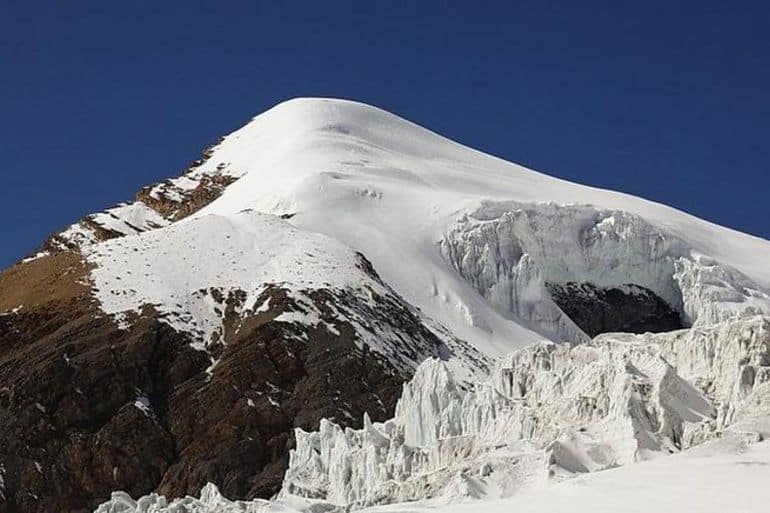
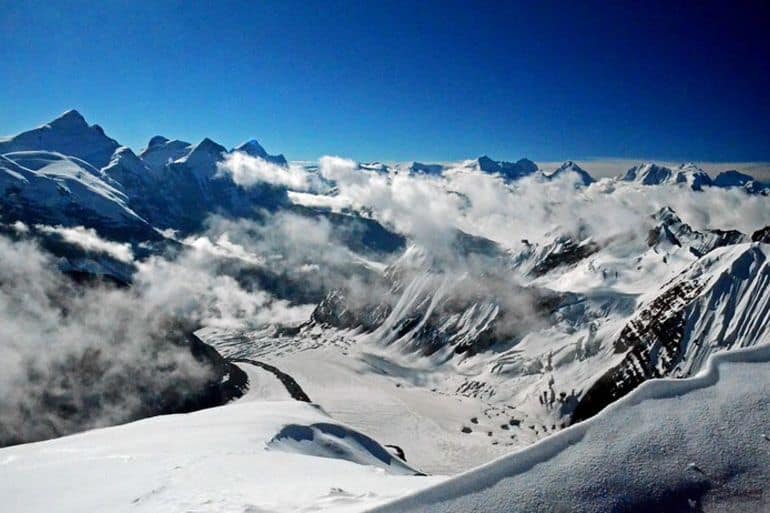



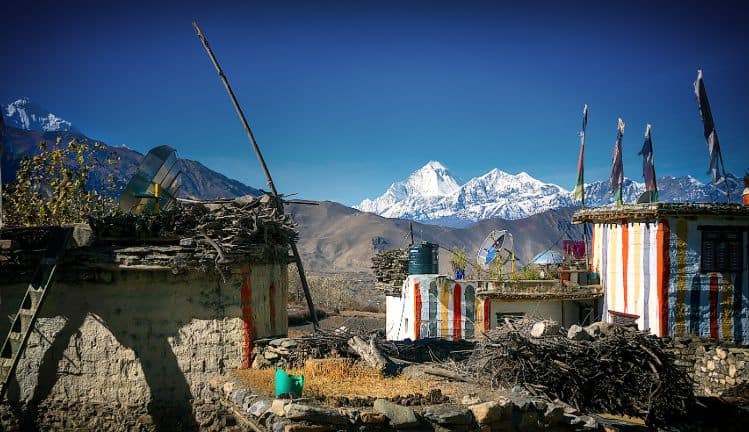
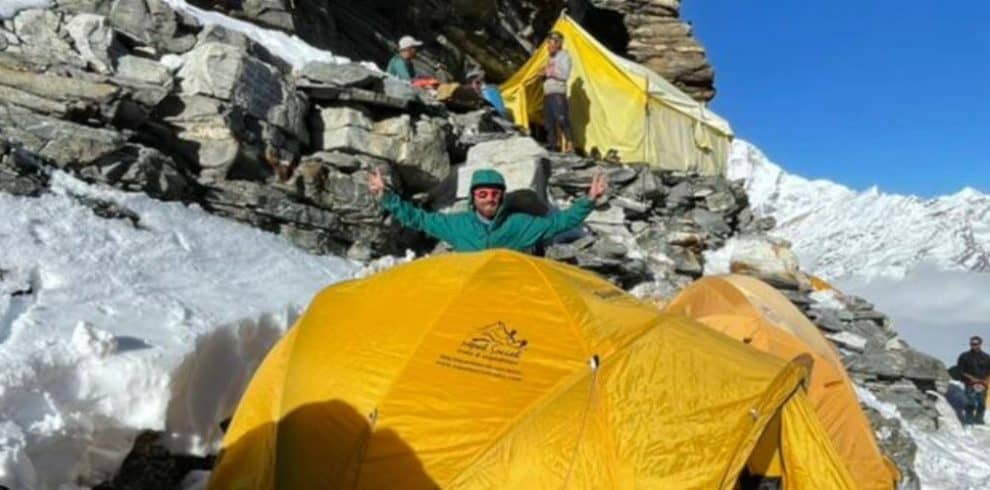
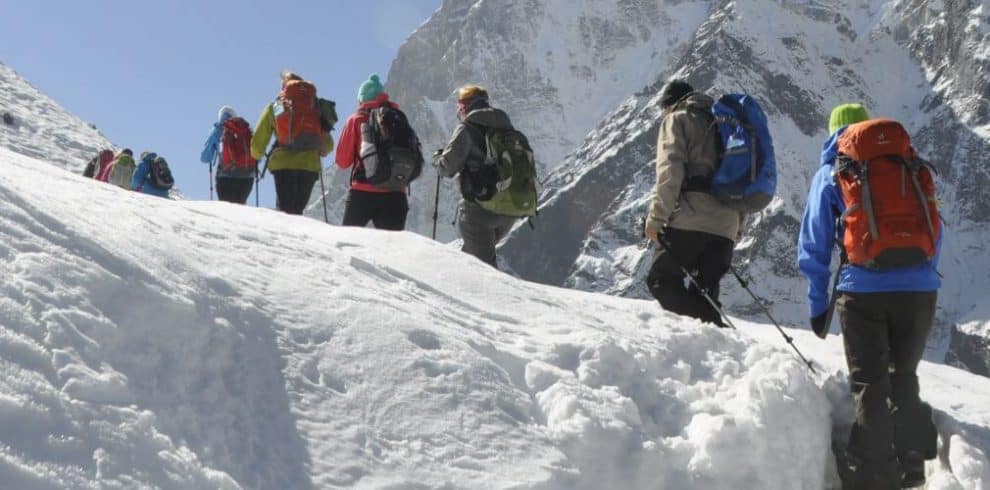
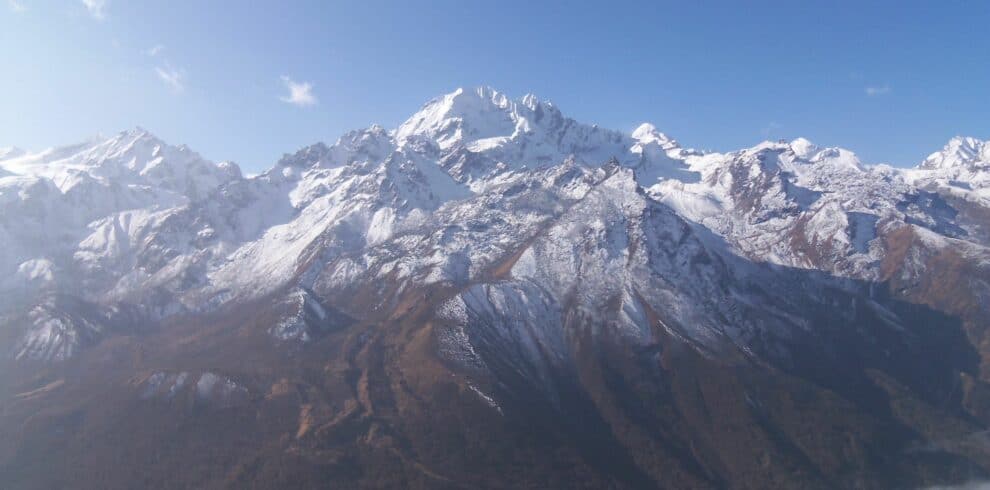
Write a Review